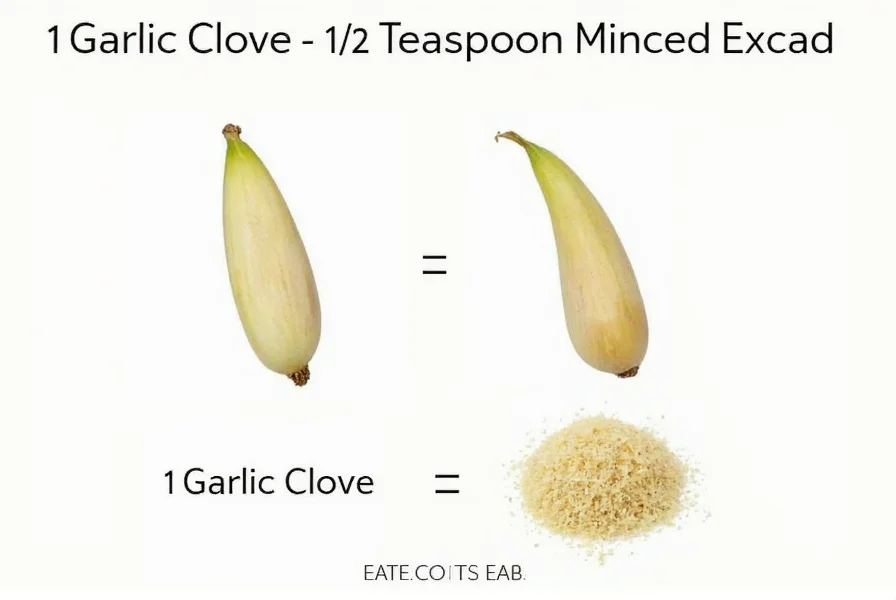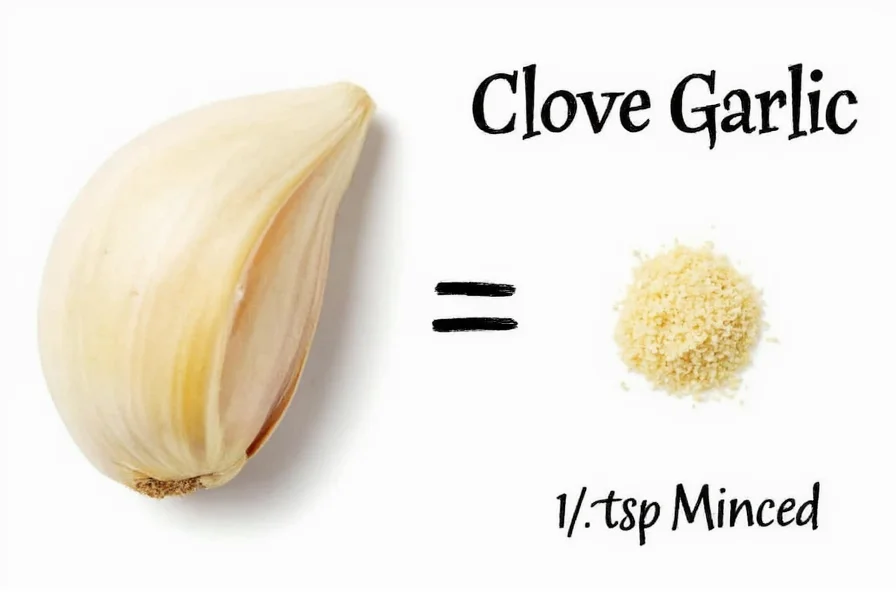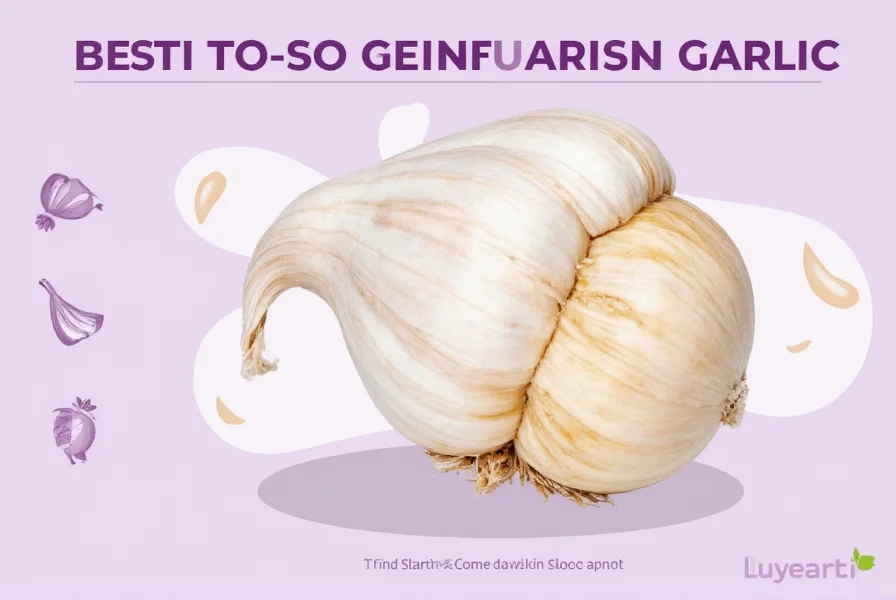Understanding garlic measurements is essential for achieving perfect flavor balance in your cooking. Whether you're following a recipe that calls for minced garlic but only have whole cloves, or vice versa, knowing the exact conversion prevents under- or over-seasoning your dishes. This guide provides precise measurements for converting between whole garlic cloves and minced garlic, helping you maintain recipe integrity and flavor consistency.
Garlic Clove to Minced Garlic Conversion Chart
| Whole Garlic Cloves | Minced Garlic Equivalent | Chopped Garlic Equivalent |
|---|---|---|
| 1 small clove | 1/4 teaspoon | 1/2 teaspoon |
| 1 medium clove | 1/2 teaspoon | 1 teaspoon |
| 1 large clove | 3/4 teaspoon | 1 1/2 teaspoons |
| 3-4 medium cloves | 1 tablespoon | 2 tablespoons |
| 12 medium cloves | 1/4 cup | 1/2 cup |
Factors Affecting Garlic Measurement Accuracy
Several variables influence the precise conversion between whole garlic cloves and minced garlic. Understanding these factors helps achieve consistent results in your cooking:
Clove size variation significantly impacts measurements. Garlic cloves range from small (less than 1/2 inch) to extra-large (over 1 inch). When recipes specify "medium" cloves, they typically mean cloves measuring approximately 3/4 inch in diameter. For critical recipes, weighing cloves provides the most accurate measurement—medium cloves typically weigh 6-8 grams each.
Mincing technique affects volume. Finely minced garlic packs more densely than roughly chopped garlic. Using a microplane produces a paste-like consistency that yields less volume than hand-minced garlic. For most recipes calling for "minced garlic," aim for pieces no larger than 1/16 inch.
Moisture content changes measurements. Freshly minced garlic contains more moisture than pre-minced jarred garlic, which often includes preservatives that affect volume. When substituting jarred minced garlic for fresh, use 10-15% less to account for added liquid.

Practical Cooking Applications
Knowing garlic conversions becomes particularly valuable when adapting recipes. Many professional recipes specify measurements by volume (teaspoons or tablespoons of minced garlic), while home recipes often use whole cloves. Understanding these conversions allows seamless recipe adaptation without flavor compromise.
When converting cloves of garlic to minced garlic for Italian dishes like aglio e olio, precision matters. Too little garlic creates a bland sauce, while too much overwhelms delicate pasta flavors. For this classic dish, 4 medium cloves minced should yield approximately 2 tablespoons—enough to flavor 1 pound of pasta without dominating.
For garlic clove equivalent to minced garlic in marinades, remember that minced garlic infuses flavors more quickly than whole cloves. When substituting, reduce marinating time by 25-30% to prevent overpowering other ingredients. This is especially important for delicate proteins like fish or chicken.
Understanding how many garlic cloves equal minced garlic measurements helps when scaling recipes. When doubling a recipe that calls for 3 cloves of garlic, don't simply double to 6 cloves—garlic flavor compounds don't scale linearly. Instead, use 5 cloves for double the recipe to maintain balanced flavor.

Common Measurement Mistakes to Avoid
Cooks frequently make errors when converting between whole garlic and minced forms. Recognizing these pitfalls ensures recipe success:
Overestimating garlic potency—many assume more garlic means better flavor, but excessive garlic can turn bitter during cooking. Stick to the 3-4 medium cloves per tablespoon guideline unless your recipe specifically calls for stronger garlic flavor.
Ignoring garlic age—older garlic develops a stronger, sometimes harsher flavor. When using older bulbs, reduce the amount by 20-25% compared to fresh garlic. Younger, fresher garlic provides milder flavor that may require slightly more volume.
Misjudging mincing fineness—the difference between chopped and minced garlic affects both volume and flavor release. True minced garlic should be nearly paste-like for proper measurement equivalence. Roughly chopped garlic occupies more volume but releases flavor more slowly.
Storage Considerations for Minced Garlic
Proper storage maintains garlic quality and preserves your precise measurements. Freshly minced garlic begins losing potency within 20 minutes of preparation. For best results, store minced garlic in an airtight container with a thin layer of olive oil on top, which slows oxidation. This mixture remains usable for up to 3 days in the refrigerator.
When measuring garlic cloves to minced garlic conversion for future use, freeze portions in ice cube trays. One standard cube (about 2 teaspoons) equals approximately one medium clove of garlic. This method preserves flavor compounds better than jarred alternatives while providing precise measurements for later use.
FAQ: Garlic Measurement Questions
How many teaspoons is one garlic clove minced?
One medium garlic clove yields approximately 1/2 teaspoon of finely minced garlic. Small cloves produce about 1/4 teaspoon, while large cloves yield up to 3/4 teaspoon. For precise cooking, medium cloves (about 3/4 inch in diameter) are the standard measurement reference.
Can I substitute jarred minced garlic for fresh cloves?
Yes, but with adjustments. Jarred minced garlic contains preservatives and extra liquid, so use 25-30% less than fresh minced garlic. For example, if a recipe calls for 1 tablespoon of fresh minced garlic (3-4 cloves), use 2 teaspoons of jarred product. The flavor profile differs slightly, with jarred garlic being milder.
Does roasting garlic change the clove to minced measurement?
Yes, roasting reduces garlic volume by about 20-25% due to moisture loss. One roasted medium clove yields approximately 3/8 teaspoon of minced roasted garlic instead of the standard 1/2 teaspoon. Account for this reduction when substituting roasted garlic in recipes calling for raw minced garlic.
How do I measure garlic cloves without a scale?
Use visual size comparisons: small cloves are under 1/2 inch long, medium are 1/2-3/4 inch, and large are over 3/4 inch. For precise measurement without scales, remember that 3-4 medium cloves fill one tablespoon when minced. You can also use standard measuring spoons to estimate whole clove quantity needed for specific minced amounts.
Why does my garlic conversion never taste right?
Several factors affect garlic flavor beyond volume measurements: clove age (older garlic is stronger), growing conditions, mincing technique, and cooking method. For consistent results, use medium-sized fresh cloves, mince uniformly, and add garlic at the appropriate cooking stage. When in doubt, start with less garlic—you can always add more but cannot remove excess once incorporated.











 浙公网安备
33010002000092号
浙公网安备
33010002000092号 浙B2-20120091-4
浙B2-20120091-4